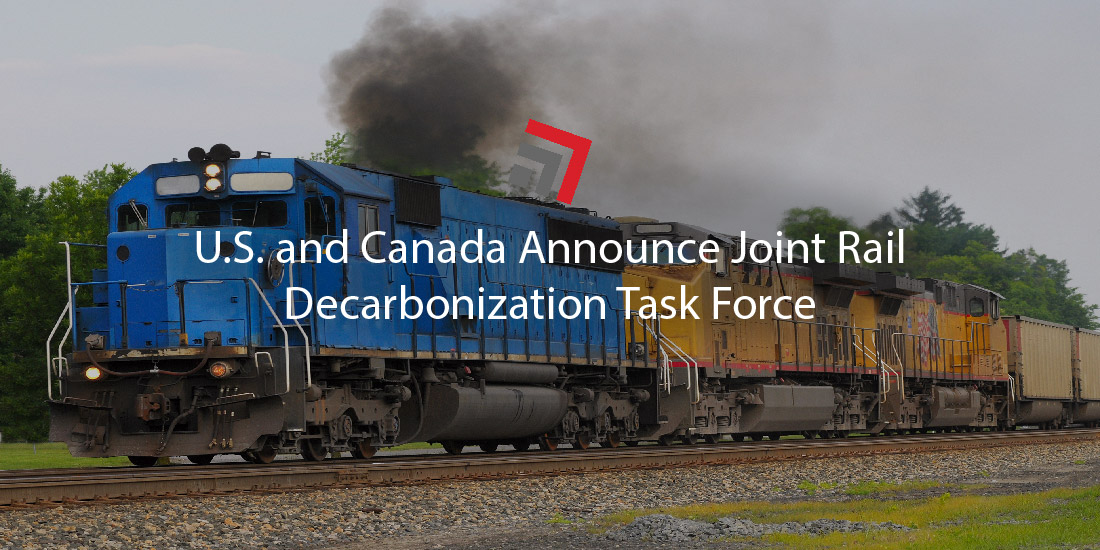The U.S. and Canadian governments are collaborating in a bid towards decarbonizing the railroad industry.
In a Dec. 6 joint statement, U.S. Secretary of Energy Jennifer M. Granholm, U.S. Secretary of Transportation Pete Buttigieg, and Canada’s Minister of Transport Pablo Rodriguez announced the creation of a task force, designated to accelerate the use of zero-emissions locomotive technologies.
The statement read, “Recognizing the important role transportation plays in reducing greenhouse gas emissions, the United States and Canada have created a Rail Decarbonization Task Force to develop a common vision to reduce emissions from the rail sector.”
The Rail Decarbonization Task Force intends to:
- Establish a joint research agenda to test the safe integration of emerging technologies, including hydrogen-powered and battery-electric locomotives.
- Coordinate strategies to accelerate the rail sector’s safe transition from diesel-powered locomotives to zero-emission technologies to ensure a net-zero rail sector by no later than 2050.
- Collaborate on the development of a U.S.-Canada rail sector net-zero climate model by 2025.
Behind these intentions lays the commitment between the two countries of “addressing the urgent global challenge of climate change.”
The addition of this task force builds off other transportation-related climate agreements between the U.S. and Canada over the last few years, such as one made in 2021 as well as a joint commitment towards zero-emission vehicle integration.
California is already pushing rail on zero-emissions
Parallel to the state’s regulatory agenda with the trucking sector, California has also taken an aggressive approach towards accelerating zero-emission practices onto the rail industry.
Back in April, the California Air Resources Board set two deadlines for locomotives operating within the Golden State: switch, industrial, and passenger locomotives built in 2030 or after will need to operate in zero-emission configurations; and, freight-purpose locomotives built in 2035 will need to comply with zero-emission configurations.
The model draws similarities to the board’s imposed regulations on trucking. And, like its contemporary, the railroad industry has countered CARB with legal action. Notably, this includes a lawsuit from the Association of American Railroads.
Both trucking and rail stakeholders contest that California’s zero-emission standards cannot be satisfied within the state’s accelerated timeline. Both argue that the required technology will not be ready for widespread deployment.
California has historically been the pacesetter when it comes to how other states will wield their regulatory authority. Some, typically blue, states will follow the Golden State’s lead, while other, mostly red, states will walk away in the opposite direction, even challenging California’s agenda in some cases.
The task force between the U.S. and Canadian governments is a tremendous display of symbolic commitment, however could it be true that California is the real influence behind transportation-related climate agenda?
Final Thoughts
The U.S. and Canada are a trade power couple.
The two countries, which share a 5,525-mile border (the largest in the world), cooperate extensively to ensure their mutually beneficial cross-border trade remains a lucrative and efficient enterprise. Whether that’s innumerable border crossings for truckload movement or seamless connections through railroad networks, trade between the U.S. and Canada is intimately woven.
Contact one of our team members if you have any questions regarding this topic or any others in domestic logistics.
More blogs similar to this:



Recent Comments